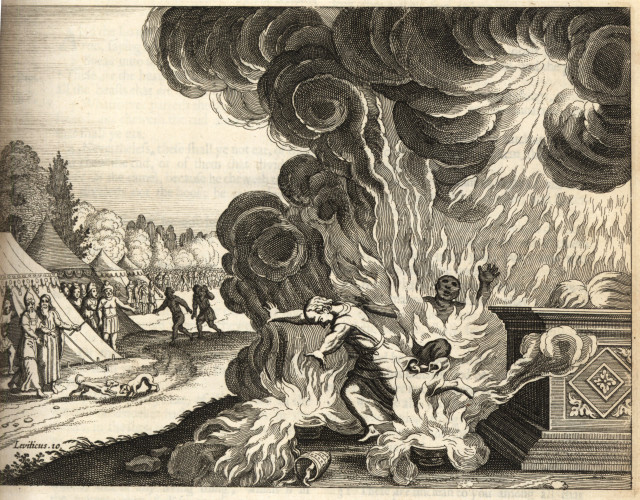One of the most painful and heartbreaking narratives in the Hebrew Bible was read last week in Israel and this morning in the rest of the Jewish world. It tells of how Aaron’s sons, Nadab and Abihu, participating in the dedication ceremonies of the Mishkan, the Tabernacle, or portable temple of the Israelites in their desert wanderings, paid with their lives for a ritual mistake:
Now Aaron’s sons Nadab and Abihu each took his fire pan, put fire in it, and laid incense on it; and they offered before the Lord alien fire, which had not been enjoined upon them. And fire came forth from the Lord and consumed them; thus they died at the instance of the Lord. Then Moses said to Aaron, “This is what the Lord meant in saying: “Through those near to Me I show Myself holy, and gain glory before all the people.” And Aaron was silent. (Lev. 10:1-3)
The story is challenging in so many ways – not only for us, but for at least 2,000 years of Jewish exegesis. Prof. Ed Greenstein presents a good discussion of this here. Like Aaron, I’ll be silent for now about what I think we might learn from this story and simply show you the images I’ve found in the Gross Family Collection.
The scene below, from one of the many illustrated versions of Tzena Urena, published in Sulzbach (for another discussion of images in this popular work, see here) shows but the two young men being consumed by flames around the altar. It focusses our attention only upon the two of them suffering the consequences of their actions:
In the image below, from the title page of Leviticus printed in Vienna in 1846, Moses, Aaron and others look on as a thing bolt of lightning hits the altar, the two, rather young-looking boys falling to their death on the right.
By far, the most graphic – and for me, the most powerful – depiction of Aaron’s sons’ death is found in an English Bible featuring the illustrations of Matthäus Merian:
Here too, Aaron and Moses look on, though standing by themselves on the far left. It looks like Moses is doing the talking, Aaron, standing in silence as in the biblical text. Others can be seen in the background, in particular, our eyes are drawn to the two darker figures left of the plumes of smoke, that seem to be walking away from the scene with some purpose. Are they the other two of Aaron’s other sons mentioned in the Torah? And then there are the two dogs playing in the foreground.
As promised, I’ll be silent. But I can’t hep but wonder about those dogs…
Shavua tov






